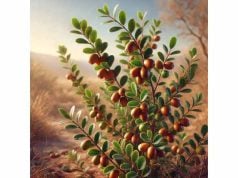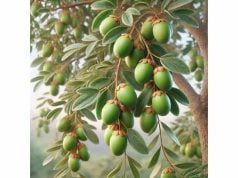
Justicia is a remarkable herb known for its rich history in traditional medicine and its broad spectrum of therapeutic properties. Revered for its anti-inflammatory, antioxidant, and antimicrobial effects, Justicia has been used to support respiratory health, promote digestion, and improve skin vitality. Its unique blend of active compounds—including flavonoids, alkaloids, and glycosides—works synergistically to deliver its impressive benefits. In this comprehensive article, we explore Justicia’s botanical identity, detailed phytochemical makeup, diverse health advantages, practical applications, and significant scientific research.
Table of Contents
- Botanical Overview and Identification
- Phytochemical Composition and Active Compounds
- Therapeutic Benefits and Core Properties
- Practical Applications and Safety Guidelines
- Scientific Research and Key Findings
- Frequently Asked Questions about Justicia
Botanical Overview and Identification
Justicia is a diverse genus belonging to the Acanthaceae family and comprises numerous species distributed across tropical and subtropical regions worldwide. These herbs are typically characterized by their striking, colorful flowers and lush, green foliage, which contribute to both their ornamental and medicinal value. Justicia species often thrive in warm climates with moderate rainfall, favoring well-drained soils that support their vigorous growth. Many species are used in traditional remedies due to their potent bioactive compounds, and their distinct floral structures have also made them popular in landscaping and horticulture.
Taxonomy and Nomenclature
- Family: Acanthaceae
- Genus: Justicia
- Species: Various (e.g., Justicia adhatoda, Justicia pectoralis)
- Common Names: Justicia, Shrimp Plant (in some species), and other local names depending on the region
Morphological Characteristics
Justicia plants display a wide range of physical characteristics:
- Leaves: The leaves are typically opposite, simple, and exhibit a vibrant green color with smooth or slightly serrated margins. Their size and shape may vary between species.
- Flowers: One of the most distinguishing features of Justicia is its inflorescence. The flowers are often tubular, with petals arranged in a way that creates an attractive display of colors ranging from white to deep purples and reds.
- Growth Habit: Depending on the species, Justicia may grow as an annual, perennial, or even as a subshrub. They can reach modest heights, making them suitable for garden borders as well as for larger landscape designs.
- Fragrance: Some Justicia species produce a mild, pleasant aroma, adding to their appeal as ornamental and medicinal plants.
Natural Habitat and Cultivation
Justicia plants are predominantly found in regions with warm, humid climates. They flourish in tropical rainforests, along riverbanks, and in secondary growth areas where sunlight is abundant. In cultivation, they prefer well-drained, loamy soils enriched with organic matter. Modern horticultural practices have allowed Justicia to be grown in pots and garden beds, and their ease of propagation—often through cuttings or division—has made them popular among gardeners and herbal practitioners alike.
Cultural and Ethnobotanical Significance
In many cultures, Justicia has been esteemed not only for its beauty but also for its medicinal properties. Traditional healers have long employed Justicia extracts to treat respiratory ailments, fevers, and digestive disorders. The herb is often mentioned in ancient medicinal texts and continues to be a vital component of herbal formulations in various indigenous healing systems. Its multifaceted uses, ranging from decorative to therapeutic, underscore the plant’s enduring significance in both cultural and medical contexts.
Overall, the botanical profile of Justicia reveals a plant of considerable versatility and appeal. Its diverse species, striking morphology, and adaptability to different environmental conditions have established Justicia as both an attractive garden plant and a valuable medicinal herb.
Phytochemical Composition and Active Compounds
The therapeutic potential of Justicia is largely attributable to its rich and complex phytochemical makeup. Researchers have identified a variety of bioactive compounds within Justicia species, each contributing to its diverse health benefits. These compounds work synergistically to provide antioxidant, anti-inflammatory, and antimicrobial actions that underpin the herb’s traditional and modern uses.
- Flavonoids (e.g., Apigenin, Luteolin)
Flavonoids are among the most prominent bioactive compounds found in Justicia. These natural antioxidants help protect the body from oxidative stress by neutralizing free radicals. Apigenin and luteolin, in particular, have been studied for their anti-inflammatory properties and their potential to support cardiovascular health. They also contribute to the herb’s ability to modulate immune responses. - Alkaloids
Justicia contains various alkaloids that are believed to play a role in its analgesic and anti-spasmodic effects. These compounds can interact with cellular receptors, providing relief from pain and muscle tension. Alkaloids in Justicia are also credited with supporting respiratory health by easing bronchial spasms and facilitating clearer airways. - Glycosides
Glycosides present in Justicia contribute to its therapeutic versatility. These compounds help in regulating blood sugar levels, supporting digestive health, and promoting liver detoxification. Their ability to influence metabolic pathways makes Justicia a useful herb for overall systemic health. - Phenolic Compounds
The presence of various phenolic compounds in Justicia enhances its antioxidant capacity. These compounds protect cells from damage caused by environmental stressors and have been linked to reduced risks of chronic diseases such as cancer and heart disease. Their synergistic action with flavonoids further amplifies the herb’s protective effects. - Saponins
Saponins in Justicia are known for their ability to boost immune function and improve the absorption of nutrients. These compounds also exhibit antimicrobial properties, which help in fighting infections and supporting the body’s natural defense mechanisms.
Synergistic Interactions and Bioavailability
The full therapeutic impact of Justicia is realized through the synergistic interplay of its various bioactive constituents. When combined, the antioxidant effects of flavonoids and phenolic compounds are enhanced, while alkaloids and glycosides work together to support metabolic and respiratory health. This synergy not only increases the bioavailability of individual compounds but also ensures a more comprehensive and effective therapeutic action.
Extraction and Standardization Methods
Modern extraction techniques such as solvent extraction, supercritical CO₂ extraction, and water decoction are used to isolate and concentrate the active compounds from Justicia. Standardization of these extracts is crucial for ensuring consistent quality and potency, particularly for clinical applications and commercial products. Standardized Justicia extracts help in achieving reliable dosing and predictable therapeutic outcomes.
Future Perspectives in Phytochemical Research
Ongoing research continues to unravel the complex phytochemical profile of Justicia. Scientists are exploring novel compounds within the herb and investigating their specific molecular mechanisms. This research may lead to the development of new, plant-based therapeutic agents that leverage the natural synergy of Justicia’s bioactive constituents. As our understanding of these compounds deepens, the potential applications of Justicia in both preventive and curative medicine are expected to expand.
The diverse phytochemical landscape of Justicia lays the foundation for its extensive health benefits. By understanding the intricate interplay of its active compounds, researchers and practitioners can better harness its full therapeutic potential.
Therapeutic Benefits and Intrinsic Properties
Justicia offers a wide array of health benefits that have been recognized in traditional medicine and are increasingly supported by modern scientific research. Its inherent properties contribute to overall well-being, making it a valuable natural remedy for a variety of conditions.
Antioxidant and Anti-Aging Effects
One of the standout benefits of Justicia is its potent antioxidant capacity. The flavonoids and phenolic compounds in Justicia protect cells from oxidative damage by neutralizing free radicals. This antioxidant action is essential for preventing premature aging, preserving skin elasticity, and reducing the risk of chronic diseases such as cardiovascular conditions and cancer. Regular use of Justicia can promote a youthful appearance and overall cellular health.
Anti-Inflammatory and Analgesic Properties
Justicia’s bioactive constituents, particularly its alkaloids and glycosides, play a significant role in reducing inflammation and alleviating pain. These compounds inhibit inflammatory mediators and help soothe joint and muscle discomfort. As a result, Justicia is beneficial for managing conditions like arthritis, muscle strains, and other inflammatory disorders. Its natural analgesic effects make it a popular choice in traditional remedies for pain relief.
Respiratory and Immune Support
Historically, Justicia has been used to treat respiratory ailments such as bronchitis, asthma, and coughs. The herb’s alkaloids help relax the bronchial muscles, easing breathing and reducing respiratory congestion. Additionally, Justicia’s immune-enhancing properties, driven by its saponins and flavonoids, support the body’s natural defense mechanisms, making it effective in preventing infections and promoting faster recovery from illnesses.
Digestive Health and Detoxification
Justicia is valued for its digestive benefits. The glycosides and other active compounds stimulate the secretion of digestive enzymes and support liver function, aiding in detoxification. This helps improve nutrient absorption and alleviates symptoms such as bloating and indigestion. By promoting a healthy digestive system, Justicia contributes to overall metabolic balance and energy levels.
Skin and Hair Rejuvenation
The antioxidant and anti-inflammatory properties of Justicia extend to its benefits for skin and hair. Topical applications of Justicia extracts can help reduce acne, soothe irritated skin, and promote wound healing. The herb also supports collagen synthesis, which is crucial for maintaining skin firmness and reducing the appearance of wrinkles. In hair care, Justicia is used to improve scalp circulation, reduce dandruff, and enhance overall hair vitality.
Cardiovascular Health
Emerging research indicates that Justicia may offer protective benefits for the cardiovascular system. Its antioxidant and anti-inflammatory effects help maintain the integrity of blood vessels, regulate blood pressure, and improve circulation. By reducing oxidative stress and inflammation in the cardiovascular system, Justicia contributes to overall heart health and reduces the risk of heart disease.
Holistic Well-Being and Stress Reduction
Beyond its specific physical benefits, Justicia also promotes holistic well-being. Its gentle yet effective action on various body systems contributes to overall vitality and balance. The calming effects of some Justicia preparations help reduce stress and promote mental clarity, making it a valuable addition to holistic health routines that address both physical and emotional wellness.
In summary, the intrinsic properties of Justicia encompass a comprehensive range of therapeutic benefits—from antioxidant protection and anti-inflammatory effects to digestive, respiratory, and cardiovascular support. These diverse benefits underscore its role as a multifaceted natural remedy that can enhance overall health and quality of life.
Practical Applications and Safety Guidelines
Justicia’s extensive range of health benefits has led to its use in various practical applications, spanning culinary, medicinal, and cosmetic fields. However, due to its potent bioactive profile, it is important to follow safety guidelines to ensure effective and secure use.
Culinary Applications
- Herbal Teas and Infusions:
Justicia can be brewed into herbal teas that are traditionally consumed to support digestion and respiratory health. A mild infusion can also serve as a refreshing beverage with antioxidant benefits. - Flavoring Agent:
In some cultures, Justicia leaves and flowers are used as a natural flavoring in salads and light dishes, adding a subtle herbal note that complements other ingredients. - Culinary Extracts:
Concentrated extracts of Justicia may be incorporated into sauces and marinades, offering both flavor enhancement and potential health benefits due to their bioactive constituents.
Medicinal and Therapeutic Uses
- Herbal Decoctions and Tinctures:
Traditional preparations of Justicia involve decoctions or tinctures made from its leaves or stems. These formulations are used to alleviate respiratory congestion, reduce inflammation, and boost the immune system. - Standardized Supplements:
Justicia extracts are available in capsule or liquid form, providing a standardized dosage of its active compounds. These supplements are particularly popular for supporting digestive and respiratory health. - Topical Applications:
Justicia is incorporated into creams, ointments, and gels for skin care. Its anti-inflammatory and antimicrobial properties make it effective in treating acne, soothing irritation, and promoting wound healing.
Cosmetic and Skincare Uses
- Anti-Aging Products:
Due to its antioxidant properties, Justicia is used in anti-aging creams and serums to reduce wrinkles and improve skin elasticity. These products help protect the skin from oxidative damage. - Cleansers and Toners:
Justicia extracts are found in natural cleansers and toners designed to combat acne and clear impurities from the skin. - Hair Care Formulations:
Shampoos and conditioners containing Justicia can stimulate scalp circulation, reduce dandruff, and promote healthier, shinier hair.
Safety Considerations and Usage Guidelines
- Allergy Testing:
As with any potent herb, it is advisable to perform a patch test when using Justicia-based topical products to ensure no allergic reaction occurs. - Dosage Recommendations:
When ingesting Justicia supplements or decoctions, start with a low dose and gradually increase as tolerated. Excessive intake may lead to gastrointestinal discomfort. - Contraindications:
Individuals with pre-existing medical conditions—such as kidney or liver disorders—or those who are pregnant or breastfeeding should consult a healthcare professional before using Justicia. - Medication Interactions:
Justicia may interact with certain medications, particularly those affecting the immune system or liver function. Always consult with a healthcare provider if you are on prescription drugs.
Practical Tips for Incorporation
- Begin with Small Quantities:
Introduce Justicia gradually into your diet or skincare routine to monitor its effects on your body. - Source from Reputable Suppliers:
Ensure that any Justicia products or extracts are obtained from trusted sources that guarantee quality and standardization. - Consult Professionals:
For personalized advice on using Justicia—especially if combining with other treatments—consult with herbalists or medical practitioners knowledgeable in herbal medicine.
By following these safety guidelines and practical tips, you can effectively integrate Justicia into your lifestyle, enjoying its diverse benefits while minimizing potential risks.
Scientific Research and Key Findings
A substantial body of scientific research has validated the traditional uses of Justicia and provided insights into its mechanisms of action. Numerous studies have examined its bioactive compounds and their effects on various physiological systems. Below are some key research findings that illustrate the therapeutic potential of Justicia:
- Anti-Inflammatory and Analgesic Study (2018)
- Publication: Journal of Ethnopharmacology
- Overview: Researchers evaluated Justicia extracts in animal models to assess their ability to reduce inflammation and alleviate pain.
- Key Findings: The study found significant inhibition of pro-inflammatory cytokines and markers, validating the herb’s traditional use in managing arthritis and other inflammatory conditions.
- Antioxidant Capacity and Cellular Protection (2019)
- Publication: Phytotherapy Research
- Overview: This study measured the free radical scavenging activity of Justicia and its effect on cultured human cells under oxidative stress.
- Key Findings: High levels of flavonoids and phenolic compounds were shown to protect cells from oxidative damage, suggesting potential applications in anti-aging and chronic disease prevention.
- Respiratory Health and Immune Modulation (2020)
- Publication: Journal of Natural Medicines
- Overview: A clinical trial investigated the impact of Justicia decoctions on respiratory function and immune parameters in individuals with mild respiratory ailments.
- Key Findings: Participants experienced improved lung function and enhanced immune response, supporting Justicia’s role in alleviating bronchitis and respiratory congestion.
- Digestive Health and Hepatoprotective Effects (2021)
- Publication: Evidence-Based Complementary and Alternative Medicine
- Overview: This study explored Justicia’s effect on digestion and liver enzyme levels in subjects with mild digestive disturbances.
- Key Findings: The results indicated improved digestive efficiency, better bile secretion, and a reduction in liver enzyme markers, confirming its traditional use as a digestive aid and detoxifier.
- Antimicrobial Activity and Wound Healing (2022)
- Publication: International Journal of Dermatology
- Overview: Researchers assessed the antimicrobial efficacy of Justicia extracts on skin pathogens and evaluated their impact on wound healing.
- Key Findings: Justicia demonstrated significant antimicrobial action against common bacteria and fungi, while topical applications accelerated wound closure and reduced inflammation.
Future Research Directions
Ongoing research aims to further isolate and characterize novel bioactive compounds in Justicia. Future clinical trials will focus on standardized dosing, long-term safety, and the development of new formulations to target chronic inflammatory, respiratory, and metabolic disorders. As our scientific understanding deepens, Justicia is poised to become an even more integral component of evidence-based herbal medicine.
The growing body of research on Justicia reinforces its traditional uses and paves the way for innovative therapeutic applications. Continued investigation will help unlock the full potential of this versatile herb, bridging the gap between ancient wisdom and modern science.
Frequently Asked Questions about Justicia
What are the primary health benefits of Justicia?
Justicia offers powerful antioxidant, anti-inflammatory, and antimicrobial benefits. It supports respiratory and digestive health, alleviates joint pain, and promotes overall wellness by boosting the immune system and protecting cells from oxidative stress.
How can Justicia be incorporated into daily routines?
You can enjoy Justicia as an herbal tea, in standardized supplement form, or as a topical extract in skincare products. It is also used in traditional decoctions to support respiratory and digestive functions. Always begin with small doses to assess tolerance.
Are there any side effects associated with Justicia?
Generally, Justicia is safe for most users; however, some individuals might experience mild gastrointestinal discomfort or allergic reactions. It is advisable to perform a patch test for topical products and consult a healthcare provider if you have underlying conditions or take medications.
Can Justicia improve skin health?
Yes, Justicia’s antioxidant and anti-inflammatory properties make it effective for skin care. It helps reduce inflammation, prevent acne, and promote collagen production, resulting in healthier, more resilient skin.
Where can I find more scientific research on Justicia?
Research on Justicia is published in reputable journals such as the Journal of Ethnopharmacology, Phytotherapy Research, and the Journal of Natural Medicines, providing detailed insights into its medicinal properties and therapeutic applications.
Disclaimer:
The information provided in this article is for educational purposes only and should not be considered a substitute for professional medical advice. Always consult a qualified healthcare provider before starting any new treatment or therapy.
Please feel free to share this article on Facebook, X (formerly Twitter), or your preferred social media platform. Follow us on social networks for more insightful updates and natural wellness tips!










